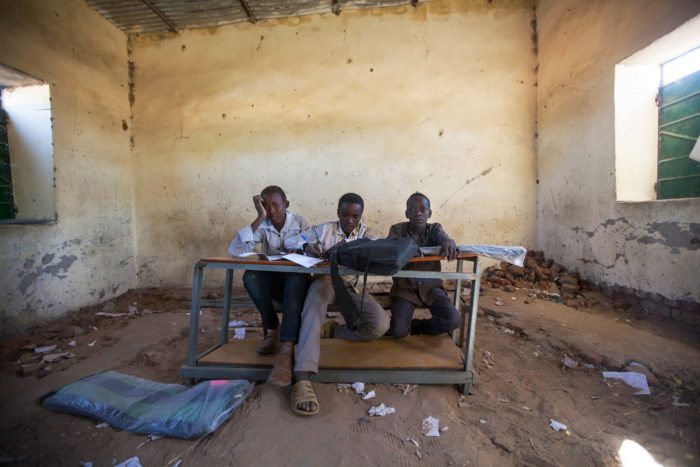Keeping Education Safe

For many children around the world, having a safe space to learn is far from guaranteed due to the threat of armed conflict and the targeting of schools. In this guest post for ‘In Focus’, Peter Klanduch and Margaret Sinclair of Education Above All’s legal advocacy programme PEIC – Protect Education in Insecurity and Conflict (PEIC) – explain the background to this global problem and the importance of keeping education safe for all children.
Children in many countries are suffering because of armed conflict. They may have to leave their country as refugees or stay at home for safety. Some children are killed or injured deliberately, as happened when a school in Peshawar, Pakistan, was attacked in December 2014 and more than 140 children and staff were killed. Schools may be destroyed: in Syria over 6 000 schools have been destroyed in the current conflict or are used to shelter homeless people. In a major incident which received worldwide attention in 2014, 276 girls were abducted by militants from a boarding school at Chibok in Nigeria where they were taking national examinations.
In some cases schools are used by armed groups. In the conflict in the Democratic Republic of Congo (DRC), rebel groups have used schools as overnight stopping places, using furniture or roofing beams as cooking fuel. Elsewhere, military forces may stay longer and use schools as barracks or for storing weapons. If a military group is living in a school, students may drop out and the school may become a target for armed attack.
Towards Safer Schools
Keeping education safe has risen on the international agenda as the insecurity of schools due to armed conflict has become more widely recognised. International guidelines for reducing military use of schools are included with other guidance in the 2015 Safe Schools Declaration, endorsed so far by 56 countries.
“Education Above All” (EAA) through its legal advocacy programme PEIC – Protect Education in Insecurity and Conflict – works to protect schools in times of insecurity. PEIC joined with others to set up the Global Coalition to Protect Education from Attack (GCPEA). GCPEA undertakes advocacy and technical work, and in 2011 and 2015 brought together country teams to exchange experience on protection methods used in different settings.
One key recommendation is for communities to protect their own schools in times of insecurity. In Nepal and elsewhere, schools have been declared as ‘zones of peace’, negotiating a code of conduct with armed groups and the military. Communities can make a great contribution by providing a roster of volunteer guards for the school, and by escorting children to school in groups to protect them from abduction. Some of these measures are helpful to all schools, and can form part of general safety and security plans, to protect against natural disasters and other local hazards.
PEIC recently supported Child Soldiers International (CSI) to look at the issues connecting child soldiers and education. In DRC, the CSI team found that girls who could not afford to continue with school fees were so frustrated that they enlisted as child soldiers. CSI is now working with the girls they interviewed, to try to reconnect them with schooling so they can be again respected within their societies.
Educating and Advocating for Safer Schools
Another approach to protecting schools is to enlist youth leaders in advocacy for schools to develop safety and security plans. PEIC is working on such a programme with Forest Whitaker’s Peace and Development Initiative (WPDI) in South Sudan and Northern Uganda together with planning conflict resolution trainings for schools to help build more inclusive and peaceful societies.
In Kenya, PEIC staff had worked in the past with UNHCR and others to develop peace education programmes for schools. These now form part of the Kenyan school curriculum In a similar curriculum initiative in Uganda, teachers have been trained with PEIC’s help to develop stories for primary school children that focus on “Learning to Live Together” life skills and values.
There is ample scope for youth and schools to help build a better future wherever there is a need for people from different backgrounds to learn to live together. Linking this to the Universal Declaration of Human Rights, the Right to Education and the Safe Schools Declaration is on the agenda of PEIC as we look forward to our work of promoting SDG 16, 4 and 5 in the countdown to the SDG 2030 milestone – and hopefully now of you, the reader.
Stahili would like to thank Peter Klanduch, Margaret Sinclair and the staff at PEIC for sharing their work with us in this contribution.
Further reading:
Education under Attach (EuA) 2014
GCPEA What schools can do to protect education from attack and military use (2016)